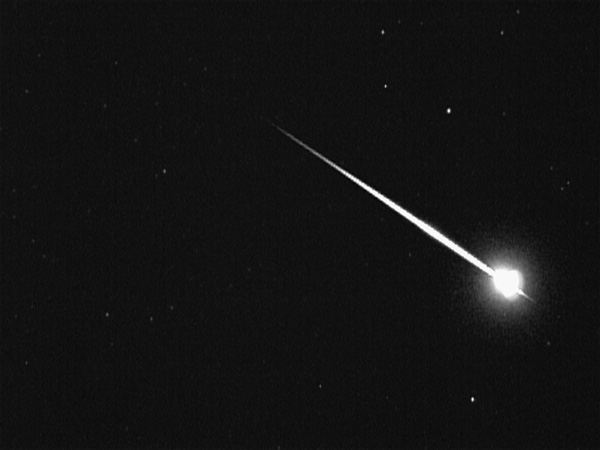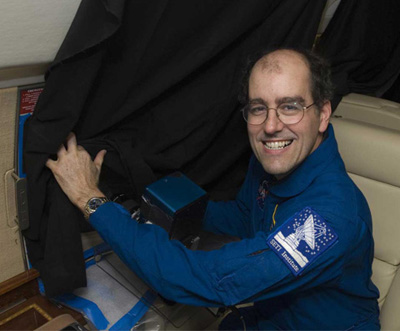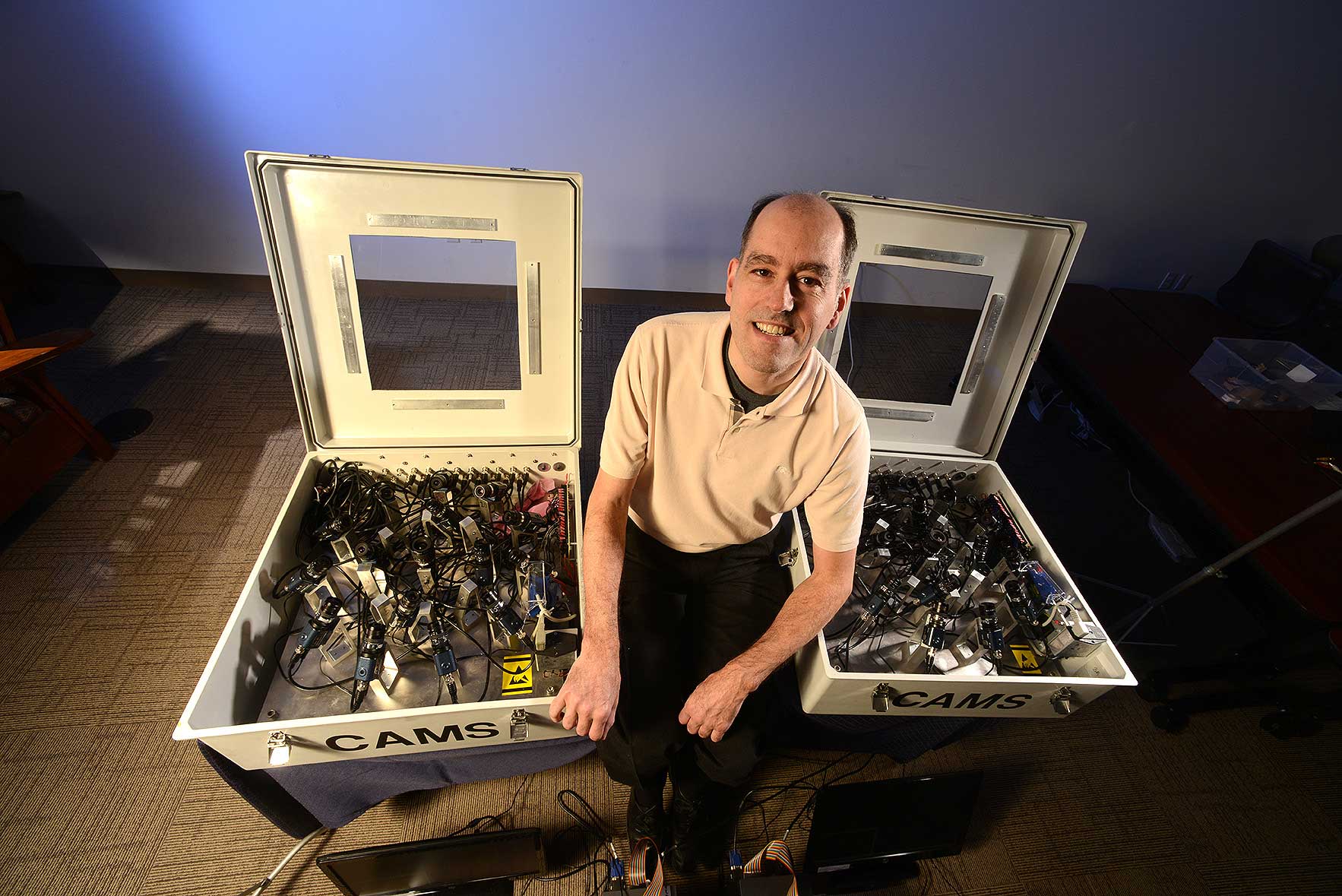
Shooting stars are nature’s atmospheric fireworks display. Whether this phenomenon can bring luck or love is open to debate, but the true origin is linked to the story of our Solar System. Meteors are grains of dusty debris from parent bodies like comets and asteroids. As the Earth’s orbit intersects that of the parent body’s orbit, some of this dust smashes into the Earth’s atmosphere, and the brief, bright streak of light is the dust particle vaporizing as it collides with the air at high speeds. Studying meteors can reveal much about the objects in our Solar System, as well as how the planets formed.
Help patch the gap in the CAMS network
Do you know what’s going on in the sky above your head? Despite all our technological advances, we still don’t understand much about the comets, asteroids, and meteors hurtling around our cosmic neighborhood. You can change this. Help build a student-run meteor observatory in India to close blind spot in CAMS, the world’s most comprehensive meteor shower-spotting network.
By funding this observatory, you’ll ensure planetary scientists don’t miss out on data about our solar system and empower computer science students who will help maintain the observatory and use the data collected for hands-on projects.
There are also exclusive perks for anyone who supports the initiative before we launch publicly. Donate now.
What is CAMS?
 Cameras for Allsky Meteor Surveillance (CAMS) is a NASA sponsored project lead by Dr. Peter Jenniskens at the SETI Institute. The CAMS network uses an array of low-light video surveillance cameras positioned around the world that keep a constant watch on the night sky. Typical observatories use light for their findings, but CAMS records particles interacting with the Earth's atmosphere, which is unique. Meteors that are filmed at more than one site are triangulated to calculate their direction and speed, allowing astronomers to calculate their orbit in space to trace the material’s origin to its parent body. (See image caught by CAMS on the right.)
Cameras for Allsky Meteor Surveillance (CAMS) is a NASA sponsored project lead by Dr. Peter Jenniskens at the SETI Institute. The CAMS network uses an array of low-light video surveillance cameras positioned around the world that keep a constant watch on the night sky. Typical observatories use light for their findings, but CAMS records particles interacting with the Earth's atmosphere, which is unique. Meteors that are filmed at more than one site are triangulated to calculate their direction and speed, allowing astronomers to calculate their orbit in space to trace the material’s origin to its parent body. (See image caught by CAMS on the right.)
CAMS encourages the use and distribution of available data and models by making data globally and publicly accessible thorough daily generated maps of meteor shower activity posted at https://meteorshowers.seti.org/
Where is CAMS?
The first CAMS platforms were set up in 2009 at Fremont Peak Observatory and Lick Observatory, in California, and has since expanded to 19 locations worldwide, including New Zealand, South Africa, Europe, United Arab Emirates, Australia, Chile, Brazil, and Namibia.
CAMS in the News
The network has made many contributions to our understanding of meteors and other cosmic bodies in our solar system. Here is a look at a few of the biggest stories:
- In April 2020 a shower in the constellation Serpens was traced back to the orbit of an unknown long-period comet.
- In April 2019, CAMS New Zealand station detected a brief outburst of 5 meteors from comet C/1907 G1 (Grigg-Mellish), confirming the comet was a meteor shower parent. The timing of the outburst, as well as observations from 1907, refined the comet’s orbital period.
- In late 2019, CAMS detected a meteor shower that may have originated from a comet described in a book from the Dark Ages, "Histories of the Wars" (553 A.D.)
- On June 2, 2016, a small asteroid plunged into the atmosphere above Arizona, its fragments captured by a CAMS network located at Lowell Observatory in Flagstaff. The recovery of the fragments in the Apache White Mountain reservation showed the meteorite’s origins to be the asteroid belt between Mars and Jupiter – a fragment of material dating to the earliest epoch of our Solar System’s history.
- CAMS discovered a new shower, called the Volantids because the meteors radiated from the constellation Volans, in 2015.
- CAMS data helped find a meteorite that landed in California in 2014 and helped traced its potential origin to the Gefion asteroid family in the asteroid belt.
Find the full list here.
Watch an animation of comets in the path of Earth.
Peter Jenniskens
 Dr. Peter Jenniskens. He’s an expert on meteor showers and currently runs Cameras for Allsky Meteor Surveillance (CAMS) project. Peter is also famous for identifying the parent body of the Quadrantid shower, a minor planet called 2003 EH1, and for his recovery of fragments of asteroid 2008 TC3 in the Nubian Desert of northern Sudan with Sudanese astronomer Muawia Shaddad. Read more here.
Dr. Peter Jenniskens. He’s an expert on meteor showers and currently runs Cameras for Allsky Meteor Surveillance (CAMS) project. Peter is also famous for identifying the parent body of the Quadrantid shower, a minor planet called 2003 EH1, and for his recovery of fragments of asteroid 2008 TC3 in the Nubian Desert of northern Sudan with Sudanese astronomer Muawia Shaddad. Read more here.
Siddha Ganju
 Siddha Ganju is a computer scientists and AI expert who automated the CAMS data network, so data was automatically downloaded from the cameras, prepped for triangulation, and analyzed. She also designed a ML algorithm to sift through the video captured each night to identify meteor showers and led the development of the NASA CAMS Meteor Shower Portal with the Frontier Development Lab (FDL) and Space ML. Currently, she works as an architect at Nvidia focusing on the Self-Driving initiative. Read more here.
Siddha Ganju is a computer scientists and AI expert who automated the CAMS data network, so data was automatically downloaded from the cameras, prepped for triangulation, and analyzed. She also designed a ML algorithm to sift through the video captured each night to identify meteor showers and led the development of the NASA CAMS Meteor Shower Portal with the Frontier Development Lab (FDL) and Space ML. Currently, she works as an architect at Nvidia focusing on the Self-Driving initiative. Read more here.

